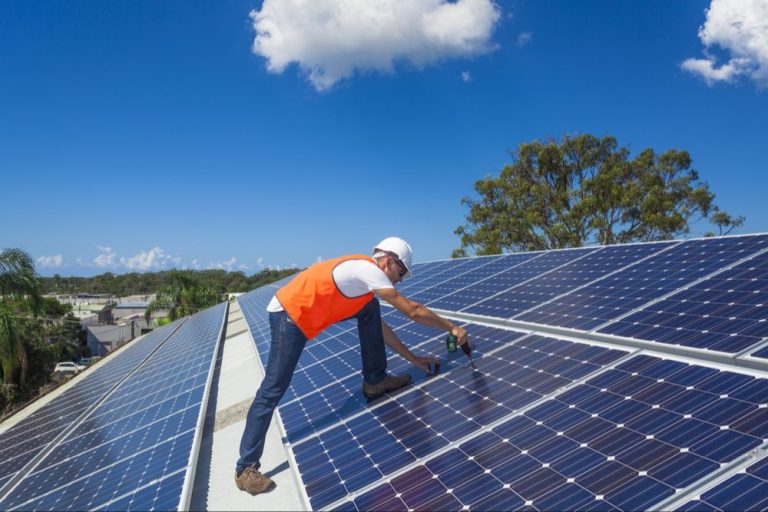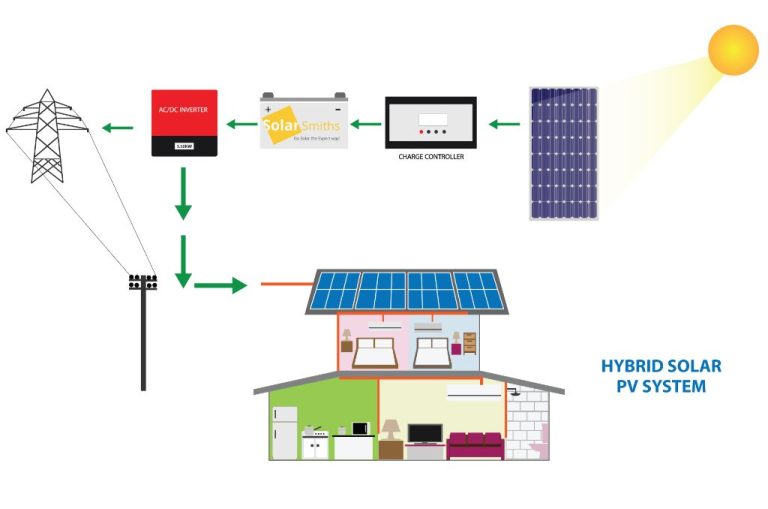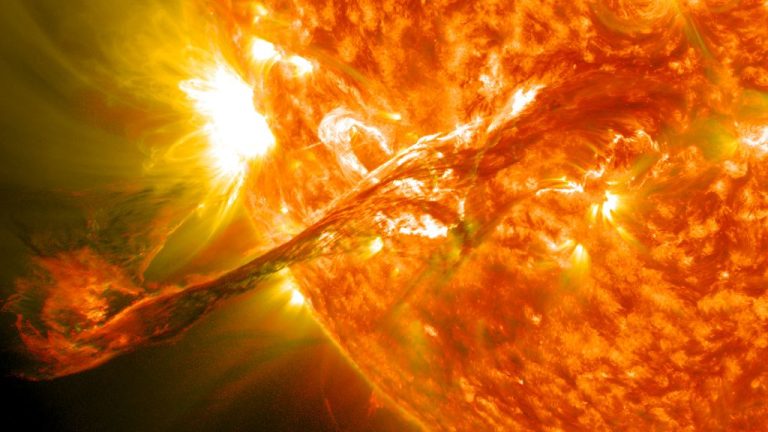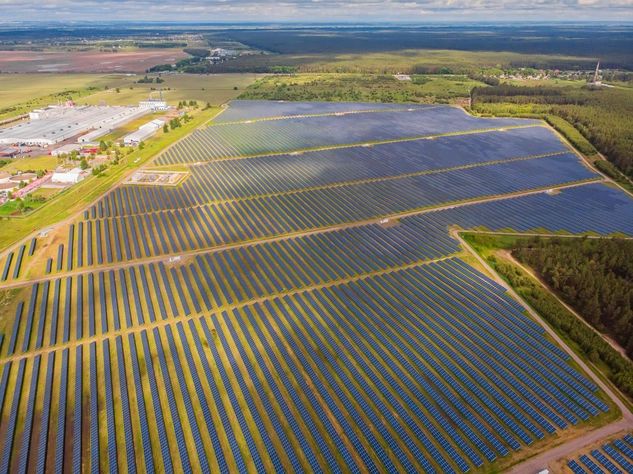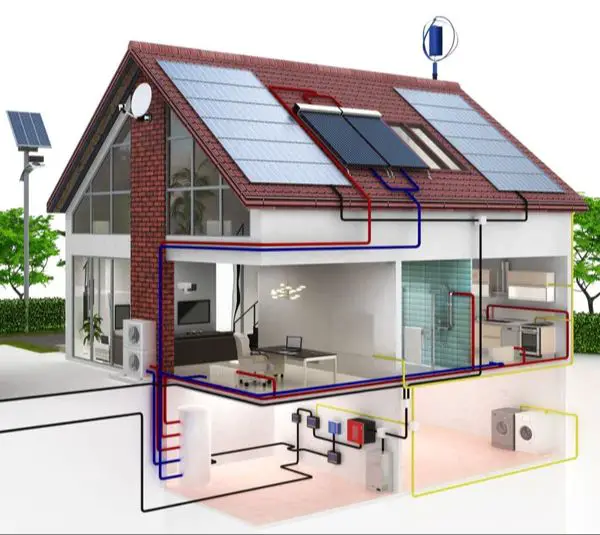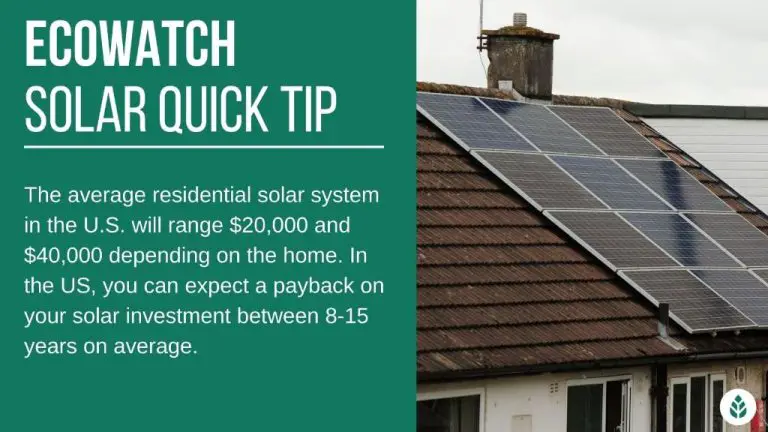Is Smartflower Worth It?
What is Smartflower?
Smartflower is an all-in-one solar energy system that unfolds like a flower to collect sunlight and generate renewable electricity. Developed by an Austrian company called Smartflower Energy Technology GmbH, the Smartflower consists of solar panels arranged in a circular array on a tall stalk. At the base is an integrated battery unit for energy storage. The key feature is that the array tracks the movement of the sun throughout the day to maximize energy production, automatically adjusting in vertical and horizontal angles by up to 40 degrees. The manufacturer claims efficiency increases of 40% over fixed solar installations. At night or during storms, the Smartflower closes up into a protective shape. It is a plug-and-play system that can be remotely monitored with accompanying smartphone apps. Using dual-axis tracking with AI optimization, the Smartflower aims to produce more solar energy than traditional solar panels in the same amount of space.
How Smartflower Works
Smartflower works by using a revolutionary design that allows the solar panels to automatically follow the sun throughout the day, optimizing energy generation. The device contains a steel pole with solar panels arranged in a flower petal shape. At the start of the day, the Smartflower is closed looking like a bud. When the sun comes up, the petals open eastward to catch the morning light. Motors and sensors then track the sun’s movement, gently adjusting the orientation of the panels to maintain direct alignment with the sun’s rays as it crosses the sky. At dusk when the sun sets in the west, the petals close together again into the bud formation.
This tracking ability allows Smartflower to generate up to 40% more energy than fixed rooftop solar panels, which remain static throughout the day [1]. The unique design also makes Smartflower resilient to wind, snow, and other harsh weather events that can damage traditional solar installations. Sensors will automatically close the device into its protective bud shape during storms. Overall, the innovative self-adjusting solar collector gives Smartflower the advantage of maximizing solar energy harvest in all conditions.
[1] “Smartflower: The World’s Most Powerful and Affordable Technology that Outperforms Solar in 2024.” GreenTech News, www.greentech-news.org/smartflower-the-worlds-most-powerful-and-affordable-technology-that-outperforms-solar-in-2024/. Accessed 15 Feb. 2023.
Benefits of Smartflower
Smartflower provides a number of benefits compared to traditional solar panels. First and foremost, it generates clean, renewable energy from the sun. This reduces reliance on fossil fuels and helps lower electricity bills through solar energy production. According to Smartflower, their solar solution can provide 60-80% of a household’s electricity needs, leading to significant savings over time [1].
In addition, Smartflower is designed for easy installation. The unit arrives pre-assembled and can typically be installed in 1-2 days, compared to weeks for standard solar panel setups. Smartflower also includes automated sun tracking, maximizing solar energy production without any ongoing manual adjustment or maintenance [2]. This hands-off operation allows households and businesses to benefit from solar with minimal effort.
Overall, for those looking to adopt solar technology, Smartflower provides a clean energy solution that can reduce electricity expenses through efficient, automated solar harvesting. The quick installation and lack of maintenance required are notable advantages over traditional solar panel systems.
Limitations of Smartflower
While the Smartflower has innovative robotic features and smart functionality, it does come with some limitations to consider [1]:
The biggest drawback of the Smartflower is the high upfront cost. At around $20,000-$40,000 for a full system, the Smartflower is significantly more expensive than a traditional rooftop solar array. The innovative design and automated features come at a premium price point.
Another limitation is limited optimal locations due to the Smartflower’s large size and wind sensitivity. The flower is 17 feet in diameter when fully open, so it requires a fairly large open area for installation. Also, the robotic arm mechanism can be damaged in very windy conditions, restricting ideal locations [2].
Efficiency drops in cold weather are another downside. As temperatures decrease in winter months, the solar cells become less efficient at converting sunlight to energy. Snow buildup on the panels can also reduce energy production [3].
So while the Smartflower is an innovative solar option, the high cost, space requirements, and cold weather limitations are factors to weigh.
![]()
[1] https://www.solar.com/learn/smartflower-solar-comprehensive-review/
[2] https://earth.org/smart-solar-flowers/
[3] https://www.cnet.com/home/energy-and-utilities/smartflower-solar-review-beautiful-solar-sculpture/
Smartflower Costs
The costs of a Smartflower solar system can be broken down into three main categories: purchase price, installation costs, and maintenance fees.
The purchase price for a standard Smartflower POP+ system ranges from $25,000 to $30,000 depending on the retailer. According to Solar.com, the average cost is around $27,500 before any incentives or tax credits [1]. The system produces 2,000 kWh per year and has a power output of 2.5 kW.
Installation costs will vary depending on your location and contractor. Expect to pay an additional $5,000 to $10,000 for installation, permitting, and any electrical upgrades needed. Cnet.com reports total costs averaging $45,000 for a fully installed Smartflower system [2].
Annual maintenance fees are minimal, as the Smartflower requires no regular maintenance other than clearing debris or snow from the solar panels. Expect to budget around $100 per year for maintenance costs.
Comparable Solar Options
There are several alternatives to consider instead of Smartflower for residential solar power generation:
Traditional Solar Panels
The most common solar option is fixed rooftop solar panels. These panels are mounted at a fixed angle towards the sun and don’t move to track sunlight. While they produce less energy per panel than tracking systems, rooftop solar is significantly cheaper upfront. According to Solar Power World, a 6 kW rooftop solar system costs around $16,200 before incentives, while a similarly-sized Smartflower system starts at $21,000 [1].
Other Solar Trackers
There are other single-axis and dual-axis tracking systems besides Smartflower. These rotate throughout the day to directly face the sun. Brands like SunPower and Nuance Energy offer sleek, low-profile trackers. While more expensive than fixed tilt, these systems can generate 20-30% more energy than rooftop panels [2].
DIY Solar
For the hands-on DIY installer, building your own solar tracking system is an option. Free plans and tutorials are available online. By sourcing components separately, total costs can be lowered substantially. However, DIY trackers require technical expertise and may not have the same reliability or resale value as pre-engineered systems.
Payback Period
The payback period for Smartflower refers to the length of time it takes for the energy bill savings from the system to offset the upfront costs of purchasing and installing it. This is an important consideration when deciding if Smartflower is a worthwhile investment.
According to one source, the average payback period for solar panels in the U.S. is 6-12 years, with most households being on the longer end of that range at around 12 years (source). However, Smartflower’s automated design and dual-axis tracking is claimed to make it 40% more efficient than fixed rooftop solar panels (source). This improved efficiency could potentially shorten the payback period.
Exact payback times will vary based on system costs, electricity rates, solar incentives/rebates, and amount of sunlight in the location. Interest rates and opportunity cost of investing the money elsewhere also factor in. Customers are encouraged to use Smartflower’s online calculator tool to estimate payback period specific to their situation.
Ideal Installation Locations
The Smartflower solar panel is best suited for regions with high electricity costs, abundant sunlight, and limited snow and wind. According to Solar Reviews citation, the ideal locations for Smartflower installation are:
- Areas with high electricity rates – The higher the local electricity costs, the faster the payback period on the Smartflower investment. Regions like California and Hawaii with expensive grid power stand to benefit the most.
- Sunny climates – Smartflower requires direct sunlight to operate effectively so areas with a high number of sunny days per year are preferred. The American Southwest, Florida, and parts of the Southeast are prime locations.
- Minimal snow – Heavy snow can potentially damage or block the Smartflower panels so locations with milder winters are better suited. Places that rarely see snow events would maximize uptime.
- Low wind – Gusty, windy conditions can impact the ability of Smartflower to track the sun properly. Less wind allows it to operate more efficiently.
Taking these factors into account, the ideal regions for installing a Smartflower solar system from a climate perspective would be the Southwestern states, Gulf Coast, Florida, and parts of the Southeast.
Future Outlook
The future looks bright for Smartflower and similar solar tracking technologies. As the world continues to shift towards renewable energy, demand for efficient solar power solutions like Smartflower is expected to grow.
According to a report by Transparency Market Research, the global market for solar tracking technologies like Smartflower is predicted to grow from $173.4 million in 2022 to $481.1 million by 2029.[1] Driving this growth is rising demand for renewable energy and improvements in solar tracking efficiency.
Smartflower itself is working on improvements in efficiency. The latest Smartflower Pop model boasts 23% more yield than fixed installation solar panels.[2] As the technology continues to advance, we can expect even greater efficiency gains in the future.
With solar energy becoming more critical in the fight against climate change, innovative solutions like Smartflower will play an important role in the future renewable energy mix. While costs remain high today, projected improvements in efficiency and manufacturing could make Smartflower and similar solar trackers much more affordable and widespread over the next 5-10 years.
Is Smartflower Worth the Investment?
When considering whether Smartflower is worth the investment, it comes down to weighing the pros and cons.
On the pro side, Smartflower is aesthetically pleasing and blends into landscapes seamlessly with its flower design. It also has an efficient sun tracking system to maximize solar energy production. The easy installation and maintenance are advantages over standard solar panel systems. According to Solar.com, Smartflower can generate up to 6500 kWh per year in optimal conditions, which is enough to offset the electric usage of an energy efficient household.
On the con side, the biggest factor is the high upfront cost of Smartflower. A single unit starts around $25,000 before installation and incentives, making it over 5 times more expensive than an equivalently sized standard solar array. Smartflower also takes up more space than traditional panels. Performance is weather-dependent and can be impacted by snow, storms, and other environmental factors. Finally, as a proprietary technology, repairs and maintenance must go through Smartflower Energy.
Overall, Smartflower is a niche product that makes the most sense for eco-conscious homeowners who prioritize aesthetics and have large budgets. For most residential solar shoppers focused purely on return on investment, standard solar panels are likely the better option. But for the right customer seeking a visually appealing solar sculpture, Smartflower can be a worthwhile investment.

